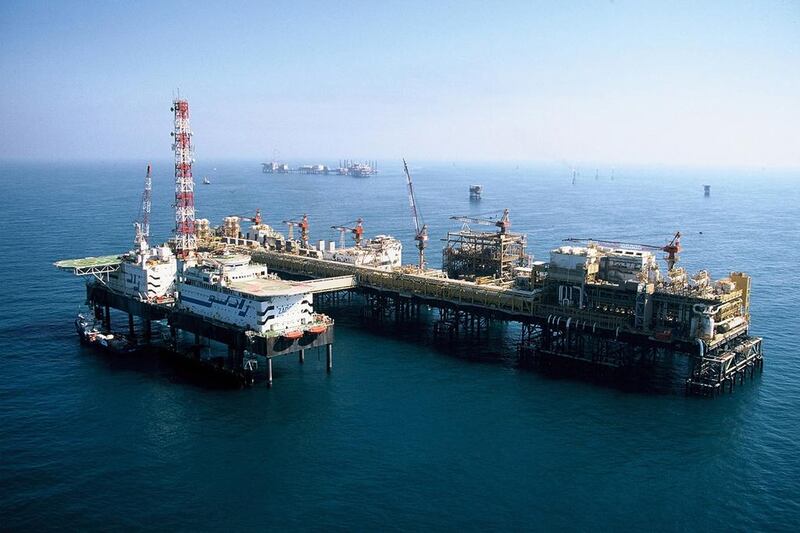There are two schools of thought about the effect of lower oil prices on US upstream investment: those who expect a quick, chilling effect on the booming shale oil sector, and those who see investment remaining resilient as fleet-footed smaller players cut costs further.
Count the chief executive of the newly merged Amec Foster Wheeler oil services conglomerate in the latter camp.
“Many of the small operators in the US are really entrepreneurs — these are not the BPs or the Exxons — and they have enough money, banker’s money, to sustain investment for six, seven more months at least,” says Samir Brikho, previously head of the UK-based oil services group Amec, which completed a US$3 billion takeover of US-listed Foster Wheeler in November.
It is one of the central questions facing the industry since oil prices collapsed at the end of last year: how long will it take for the strategy being pursued by Saudi Arabia and its allies, of encouraging lower oil prices to force off the market higher-cost production from North America and elsewhere, to stabilise the market?
The answer, according to Mr Brikho, is that it will take quite some time. “Why do many people think that this cycle is going to be longer than before and at a lower [price] base? Because if Saudi is going to be successful in squeezing producers out they need to continue to do this for a minimum period of six to nine months,” he reckons.
It is not a universally held opinion. Last week, a number of reports indicated that the shale, or “tight”, oil sector in the US was already showing signs of retreating in the face of lower oil prices. The oil services group Baker Hughes, for example, said last week in its widely followed weekly report that drilling rigs deployed in the US fell by the sharpest rate since early 1991 — by 61 to 1,421 rigs.
There were other indications that the tight oil producers were suffering, such as a 5 per cent drop in rig use in the Permian Basin shale play in Texas, plus a sharp drop in horizontal drilling rigs favoured by tight oil producers.
Yet there are still many contradictory assessments of how lower oil prices will play out in North America.
That is partly because the economics of the booming US sector, where oil production has soared from just above 5 million barrels per day in 2008 to a forecast 9.5 million bpd this year — the highest since 1970s record output, have changed radically. The US Energy Information Agency, for example, estimates that the average cost per barrel of extracting tight oil has fallen by more than $30 per barrel in the past five years.
A report this week from the influential energy consultants Wood Mackenzie addressed some of the complexities. It estimated that 1 million bpd of US production comes from onshore “stripper” wells, with operating costs ranging between $20 and $50 a barrel. But even when prices go below the marginal cost of operating these fields, Wood Mackenzie says, some producers will keep them going and store oil as long as they expect prices to rise later.
Similarly, the huge bitumen oilfields in Canada’s Alberta province may lose money at prices below $50 a barrel, the energy consultancy estimates, but as a large part of their cost is energy-related those costs have been falling with oil prices.
And shutting in — implementing a production cap lower than the available output — those complex extraction operations and then restarting them later is a very costly process, discouraging a shut-in even at prices below operating cost.
It is considerations like these that are paramount for oil services companies such as Amec Foster Wheeler, whose oil and gas business accounts for nearly 60 per cent of its revenue.
Mr Brikho says current conditions are much tougher than they were after the financial crisis six years ago, when a huge decline in oil prices was followed by a fast recovery and stability for more than five years at prices above $100 a barrel.
“It is our view that oil prices are going to be low for a longer period of time versus what we had in 2008-09, which is, in a way, positive news for the industry,” he says. “In my view, the new operating models you are going to have are going to be different from the way we operated in the past.” Companies will have to change their business models to maintain profit margins of 8 to 10 per cent at prices of $50 a barrel or lower, which was not imperative when prices were $100 or more and absolute profit levels were fat, he says.
It will mean more emphasis on operating expenditure rather than capital expenditure, where budgets have already been subject to sharp cutbacks from the likes of ConocoPhillips.
In the Middle East, where Amec Foster Wheeler has pinned many of its hopes for growth, Mr Brikho expects that national oil companies will change from a focus on capital expenditure on big new exploration or downstream projects, to looking more at how to upgrade existing infrastructure.
“In the past five years, because the oil prices were so high, the industry were so lazy about reinventing their business models because they said ‘what’s the point?’ ” Mr Brikho says.
“Now, with prices at $50 and maybe going down to $40 it is insanity to keep doing the same thing and expect a different result.
“Talking to many clients in the Middle East they are asking ‘should I now invest in brownfield investments in life extensions [enhanced oil recovery] rather than investing in a new line, whether it is LNG, or a new exploration and so on? That question was not there before, not to the same extent” he says.
A new report from the consulting group McKinsey supports the view that business models will need to change.
The rising costs and more demanding conditions of giant offshore projects means that with lower oil prices they will need to drive costs down by focusing on specific basins where they have expertise, it argues.
“The new caution in capital expenditure will require companies to choose the projects best suited to their strengths, which in turn means not only thinking hard about capabilities, but also knowing more precisely the financial effect that the different factors have in each basin,” according to McKinsey’s Thomas Seitz and Kassia Yanosek.
There may be an element of wishful thinking in Mr Brikho’s expectation that the industry will continue to spend, even if companies concentrate more on lower-margin operating expenditure to make up for reduced capital expenditure.
Amec Foster Wheeler’s shares are down about one-third from their peak in June last year, trading at about 840 pence in London in early January. But that is much better than a lot of its peers — Petrofac is down closer to 60 per cent, while shares in Italy’s Saipem have lost two-thirds of their value compared with June figures.
Amec Foster Wheeler’s resilience has a lot to do with its more diversified portfolio — power, which makes up about 20 per cent of revenues, grew at 16 per cent in the half year to June, while oil and gas revenues fell by 4 per cent.
The company also has about 20 per cent of its business in renewable energy, including nuclear. It has supplied an estimated 10 per cent of the US photovoltaic solar market capacity and is bidding for a slice of the big Saudi solar investment that is expected.
It will need that diversification to weather the oil price storm.
amcauley@thenational.ae
Follow The National's Business section on Twitter





